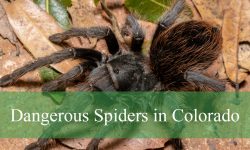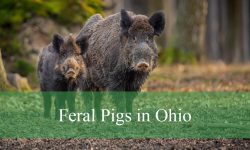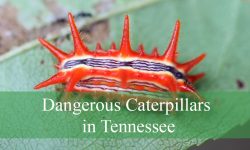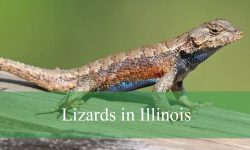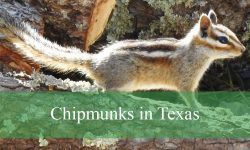Pennsylvania is well known for its diverse wildlife, and among its most iconic animals are the deer. The Keystone State is home to one native species of deer and two other types that have either been reintroduced or exist in controlled environments. Whether you are a hunter, wildlife enthusiast, or casual observer, understanding the different deer in Pennsylvania helps you appreciate the state’s natural heritage even more.
In this guide, we will explore the three types of deer in Pennsylvania, with detailed identification tips, habitats, and fascinating behaviors. We’ll also share the best times and places to see them and provide a comparison table for quick reference.
White-tailed Deer (Odocoileus virginianus)
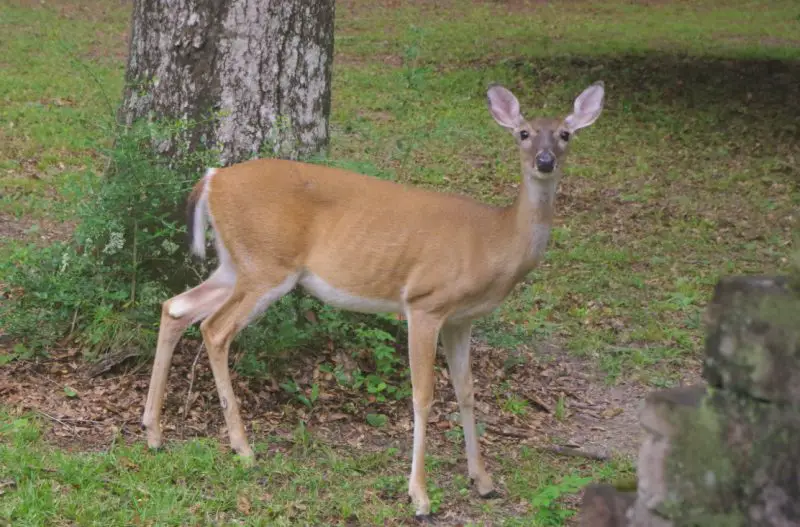
Characteristics and Identification
The white-tailed deer is not only Pennsylvania’s state animal but also one of the most iconic symbols of North American wildlife. This medium-sized member of the deer family is easily recognized by its namesake tail, which displays a bright white underside when raised. This “flagging” behavior is a natural alarm signal, warning other deer of nearby danger. In summer, their coats are sleek and reddish-brown, providing excellent camouflage in leafy forests, while in winter, their fur turns to a grayish-brown shade that helps them blend into bare woodlands and snowy landscapes.
Male white-tailed deer, commonly called bucks, are distinguished by their antlers, which are shed and regrown each year. Antler growth begins in spring, covered in a soft layer of velvet that supplies nutrients. By late summer, the velvet is shed, revealing hardened antlers ready for the fall rut. Antlers can vary greatly in size and number of points, with mature bucks often displaying impressive racks that make them a prized sight for hunters and wildlife photographers alike.
Adult bucks typically weigh 150 to 300 pounds, with the heaviest individuals occasionally exceeding 350 pounds in prime habitats. Females, or does, are smaller, ranging from 90 to 200 pounds. Their slimmer build and lack of antlers make them easy to distinguish from males. Fawns are born in late spring and early summer, sporting distinctive white spots that act as camouflage in forest clearings. These spots fade by fall, when young deer begin to resemble adults.
Physically, white-tailed deer differ from elk and other deer species by having a slender body, relatively shorter legs, and a long, narrow face. Their large, dark eyes and swiveling ears give them excellent sensory awareness, allowing them to detect even the slightest movement in their environment. Observers will often notice their graceful, bounding gait, known as stotting, which helps them quickly escape predators or cross rugged terrain.
Habitat and Behavior
White-tailed deer are incredibly adaptable, making them one of the most widespread mammals in Pennsylvania. They thrive in mixed woodlands, forest edges, meadows, farmlands, and even suburban backyards. Their ability to coexist with human development is both a testament to their resilience and a challenge for wildlife management. While they prefer areas with dense cover for bedding and protection, they often forage in open fields, particularly at dawn and dusk.
These deer are crepuscular, meaning they are most active during the low-light hours of early morning and evening. During the day, they often retreat to shaded areas, lying quietly to avoid predators and human disturbance. They are opportunistic feeders with a broad diet that shifts with the seasons. In spring and summer, they consume tender green shoots, wildflowers, and crops such as soybeans and corn. In autumn, they feast heavily on acorns, apples, and other mast crops, building fat reserves for winter. During colder months, their diet shifts to woody browse such as twigs, buds, and bark.
Socially, white-tailed deer live in loose, matriarchal groups. Does often travel with their fawns, while bucks tend to be solitary outside of the breeding season. The rut, or mating season, occurs in late October and November. During this time, bucks compete for females by engaging in antler battles and scent-marking territories with scrapes and rubs. These behaviors are highly visible signs of deer activity in Pennsylvania forests during fall.
White-tailed deer are cautious and alert, relying on their acute sense of smell, excellent hearing, and sharp eyesight to avoid predators. In Pennsylvania, their main natural predators include coyotes, bobcats, and black bears, though vehicle collisions pose a far greater mortality risk. When startled, they may leap with their tails raised high, an unmistakable behavior that helps others in the herd respond to danger quickly.
Population and Management
Pennsylvania has one of the most robust white-tailed deer populations in the United States. However, this success has come with challenges. Without proper management, deer populations can grow too large, leading to overbrowsing in forests, which affects tree regeneration, wildflowers, and overall biodiversity. Overabundant deer also cause significant agricultural damage by feeding on crops and orchards, and they are a major factor in vehicle collisions, which can result in both human injury and deer mortality.
To address these challenges, the Pennsylvania Game Commission implements strict population management strategies. Regulated hunting seasons are the primary tool for balancing deer numbers with available habitat. Seasons are carefully timed and divided into antlered and antlerless harvests, ensuring sustainable population control. In particular, allowing more does to be harvested helps prevent exponential population growth, as one doe can produce multiple fawns annually.
Beyond hunting, wildlife officials monitor deer health through surveys, check stations, and disease testing. One significant concern in Pennsylvania is Chronic Wasting Disease (CWD), a fatal neurological illness affecting deer and elk. Managing CWD requires ongoing surveillance, restrictions on carcass transport, and public education to limit its spread.
Hunting revenue plays a crucial role in conservation. Funds from hunting licenses and permits directly support habitat restoration, wildlife research, and public education programs. As a result, hunters and conservationists alike play a vital role in maintaining the balance between healthy deer populations and healthy forests.
For wildlife watchers, white-tailed deer represent a living connection to Pennsylvania’s natural history. From observing a fawn hidden in tall grass during spring to watching a buck stride through the snow in winter, these animals remain one of the most captivating and frequently encountered species in the state.
Elk (Cervus canadensis)
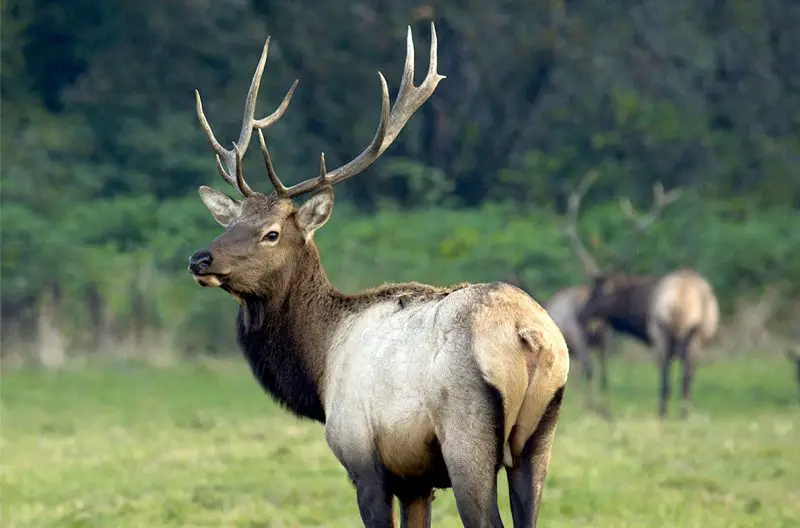
Characteristics and Identification
The elk, or wapiti, is the largest member of the deer family currently living in Pennsylvania, and its size alone makes it one of the most majestic animals in the state. Mature bulls (males) can weigh between 700 and 1,000 pounds, while cows (females) typically range from 400 to 600 pounds. Their size dwarfs that of the white-tailed deer, and even a young elk calf often rivals the size of a full-grown whitetail doe. Standing up to 5 feet tall at the shoulder, elk are unmistakable when compared to other deer species in the region.
One of the elk’s most distinctive features is the large, pale rump patch, which contrasts with their otherwise brown to tan body coloration. Their coats shift seasonally, becoming reddish in summer and more grayish-brown in winter. Unlike the slender white-tailed deer, elk have a stockier, muscular build with long legs adapted for covering large distances and navigating meadows and forests.
Elk antlers are among the most impressive in the animal kingdom. Bulls grow massive, branching antlers each year that can span up to 5 feet wide and weigh as much as 40 pounds. These antlers typically feature multiple tines, with dominant bulls sporting racks of six or more points on each side. Antler growth begins in spring, covered in velvet, and the hardened antlers are revealed by late summer as bulls prepare for the breeding season.
Perhaps the most iconic behavior of elk is their bugling call during the fall rut. Unlike the lower-pitched grunts or snorts of white-tailed deer, the elk’s bugle is a haunting, high-pitched whistle followed by a series of guttural notes. This sound carries for miles through valleys and forests, serving both as a mating call to attract females and a warning to rival bulls. The bugle, paired with displays of antler strength, makes the elk rut one of the most dramatic wildlife spectacles in Pennsylvania.
In addition to size and vocalization, observers can identify elk by their herd behavior. Unlike whitetails, which often travel in small family groups, elk commonly gather in larger herds, especially during winter and the rut. Seeing dozens of elk grazing together in a field is an unforgettable experience for wildlife watchers.
Habitat and Reintroduction
Historically, elk were once widespread in Pennsylvania, thriving in the forests, valleys, and meadows of the state. However, by the mid-1800s, unregulated hunting, deforestation, and human settlement led to the complete extirpation of native eastern elk. For decades, Pennsylvania had no elk at all, until a bold conservation project was undertaken.
In the early 1900s, the Pennsylvania Game Commission reintroduced Rocky Mountain elk from Yellowstone and other western states. Beginning in 1913, more than 170 elk were released into north-central Pennsylvania. Over time, these elk established a sustainable population, adapting well to the state’s landscapes. Today, the herd is strongest in Elk, Cameron, and Clearfield Counties, with smaller numbers scattered in surrounding regions.
Elk prefer habitats that provide both open foraging grounds and forested cover. Meadows, reclaimed strip mines, and agricultural fields are common grazing areas, while adjacent woodlands provide shelter and protection. Unlike white-tailed deer, which are primarily browsers feeding on twigs and shrubs, elk are true grazers, feeding mainly on grasses, herbs, and forbs. They also consume bark, acorns, and farm crops when available, which sometimes brings them into conflict with local farmers.
Seasonal behavior also affects their habitat use. In summer, elk often stay in shaded forest edges during the hottest parts of the day, venturing into meadows at dusk. In winter, they may move to lower elevations in search of food, gathering in larger groups for warmth and safety. Their ability to utilize a wide range of habitats has allowed them to thrive in Pennsylvania’s mixed landscape of forests, fields, and reclaimed lands.
The reintroduction of elk is widely regarded as one of Pennsylvania’s greatest wildlife conservation success stories. From near extinction, the elk have rebounded to become a celebrated species, drawing thousands of visitors each year to see them in their natural habitat.
Conservation and Tourism
The elk herd in Pennsylvania is carefully managed to maintain a healthy balance with available habitat and to minimize conflicts with humans. The Pennsylvania Game Commission regulates elk numbers through a highly controlled hunting season, with limited permits awarded by lottery. This helps prevent overpopulation, reduces crop damage, and ensures the herd remains sustainable without stressing its environment.
Elk tourism has become a cornerstone of north-central Pennsylvania’s identity. Towns like Benezette have transformed into hubs for elk-watching, offering visitor centers, guided tours, and educational programs. The Elk Country Visitor Center provides observation areas, interpretive trails, and interactive exhibits, making it a must-visit destination for anyone interested in seeing elk.
The most spectacular time to observe elk is during the fall rut (September through early October). During this period, bulls gather harems of cows, bugle across the valleys, and clash antlers in dramatic displays of dominance. The rut is not only a critical time for reproduction but also a thrilling natural event that attracts photographers and nature lovers from across the country.
Outside the rut, elk can still be seen throughout the year, especially at dawn and dusk in meadows near forest edges. Winter is another excellent time for viewing, as herds often gather in visible locations while foraging for limited food sources. Elk watching provides a significant boost to local economies, as visitors flock to the region, supporting businesses, lodging, and restaurants.
Conservation programs also emphasize education and coexistence. Landowners and farmers in elk country are encouraged to use fencing and deterrents to protect crops, while wildlife managers continue habitat improvements that benefit both elk and other species. These efforts ensure that Pennsylvania’s elk remain a symbol of conservation success and a treasured part of the state’s natural heritage.
Exotic Deer (Sika and Fallow Deer)
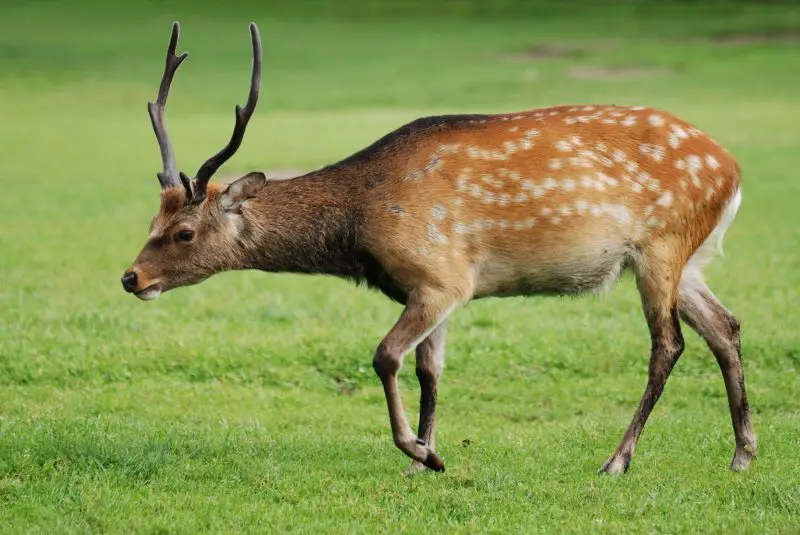
Characteristics and Identification
In addition to the native white-tailed deer and the reintroduced elk, Pennsylvania also has a limited presence of exotic deer species that are maintained primarily in preserves or hunting enclosures. The two most notable examples are the sika deer (Cervus nippon), native to East Asia, and the fallow deer (Dama dama), native to Europe and the Mediterranean region. While these species are not free-ranging in Pennsylvania, they are sometimes encountered within private lands or high-fence game farms, where they are valued for their unique traits and ornamental beauty.
Sika deer are noticeably smaller than white-tailed deer, with adults typically weighing 70 to 100 pounds for females and 100 to 180 pounds for males. Their coats are usually dark brown, often with a reddish hue, and many retain a pattern of white spots throughout their lives, unlike white-tailed fawns that lose their spots after a few months. They have shorter legs, rounded bodies, and relatively small antlers with just a few points, making them easy to distinguish from other Pennsylvania deer species.
Fallow deer are even more distinctive due to the extraordinary variation in their coat colors. They can appear in several morphs, including white, light brown with white spots (the most common “menil” form), chocolate brown, or nearly black. One of their most striking features is the shape of the males’ antlers, which are palmate—broad and flattened like a hand with multiple points extending from the edges. Bucks can weigh between 130 and 220 pounds, while does are smaller, generally around 90 to 150 pounds.
Both sika and fallow deer are more vocal than white-tailed deer. Sika males produce high-pitched whistles and squeals during the rut, while fallow bucks are known for their deep, grunting calls that can be heard during the breeding season. These sounds, combined with their unusual appearances, make them stand out in contrast to Pennsylvania’s native deer.
For wildlife enthusiasts and hunters alike, these exotic deer offer a chance to observe or pursue species with features that are rarely seen in North America. However, because they are confined to preserves, spotting them in Pennsylvania’s wild forests and meadows is highly unlikely.
Habitat and Presence in Pennsylvania
Unlike white-tailed deer and elk, which roam freely across Pennsylvania’s woodlands and fields, sika and fallow deer are not established wild populations in the state. Instead, they exist within privately owned, high-fence preserves or game farms, where they are managed for ornamental purposes, wildlife viewing, or controlled hunting opportunities. These enclosures simulate natural environments, with grassy fields, woodlots, and water sources, but the animals remain contained.
Occasionally, individual exotic deer may escape from preserves, leading to rare sightings outside of enclosures. However, Pennsylvania’s climate and ecosystems have not supported the development of self-sustaining wild populations. Escaped individuals are usually reported to wildlife authorities, as their presence could interfere with native species management.
Globally, both sika and fallow deer have demonstrated an ability to adapt to non-native habitats when introduced in large numbers, but Pennsylvania has avoided this outcome due to careful regulation. For instance, in places like Maryland’s Eastern Shore, wild populations of sika deer have become established and even compete with native whitetails. In Pennsylvania, though, strict management has prevented similar expansion.
Because they are non-native, exotic deer do not play a natural role in Pennsylvania’s ecosystems. Unlike white-tailed deer, which are prey for coyotes, bobcats, and black bears, or elk, which contribute to habitat structure by grazing, exotic deer remain more of a novelty species. Still, they are appreciated for their aesthetic appeal, attracting tourists and hunters who wish to see or harvest an unusual deer that looks different from the native wildlife.
Conservation and Controlled Hunting
While sika and fallow deer are not a conservation priority in Pennsylvania, they are carefully managed within preserves to ensure animal health and prevent escapes. Private landowners often breed them selectively for antler shape, coat coloration, or trophy size, which adds to their appeal in the hunting industry. Controlled hunting of exotic deer provides an alternative to traditional deer hunting and contributes to local economies through preserve-based tourism.
From a conservation perspective, wildlife officials emphasize the importance of keeping exotic deer populations separate from native herds. This separation reduces the risk of disease transmission and prevents competition for food resources. Diseases like chronic wasting disease (CWD) are a major concern for Pennsylvania’s native white-tailed deer and elk populations, and introducing new deer species into the wild could complicate these challenges.
For visitors, game preserves that house exotic deer offer a unique educational experience. Observers can learn about global deer diversity and compare the physical differences between native and exotic species. These facilities often highlight the differences in behavior, diet, and habitat use between species, reinforcing the importance of maintaining balance within Pennsylvania’s native ecosystems.
While they may not roam the state’s forests naturally, sika and fallow deer provide a glimpse into the diversity of the deer family worldwide. They serve as living examples of how humans have transported and managed wildlife across continents, and they remind us of the delicate balance required to protect native species while appreciating the uniqueness of exotic ones.
Comparison Table: Deer in Pennsylvania
Feature |
White-tailed Deer |
Elk |
Exotic Deer (Sika / Fallow) |
|---|---|---|---|
Native to PA |
Yes |
Historically, now reintroduced |
No |
Size |
Medium (90–300 lbs) |
Very large (400–1,000 lbs) |
Small to medium (70–220 lbs) |
Antlers |
Branched, smaller |
Large, many-tined |
Palmate (fallow) or smaller (sika) |
Coat |
Reddish-brown / gray |
Light brown with pale rump |
Variable, spotted (sika/fallow) |
Where Found |
Throughout PA |
North-central PA |
Private preserves |
Best Time and Place to Observe Deer in Pennsylvania
White-tailed Deer
The best time to observe white-tailed deer is during early morning and late evening, particularly in the fall rut (October–November) when bucks are active. They can be seen in state forests, farmland edges, and suburban green spaces across Pennsylvania.
Elk
Elk viewing is best during the fall rut (September–October), when bulls are bugling and herds are most visible. The Elk Country Visitor Center in Benezette is the premier location, with designated viewing areas and guided tours.
Exotic Deer
Since exotic deer are not wild in Pennsylvania, the best places to observe them are within game farms and private preserves. Their availability varies depending on location, and they are not commonly seen in the open wild.
FAQs About Deer in Pennsylvania
What is the most common deer in Pennsylvania?
The white-tailed deer is the most common and widespread deer in the state, found in nearly every county.
Where can I see elk in Pennsylvania?
The best place to see elk is in north-central Pennsylvania, especially around Benezette in Elk County.
Do elk and white-tailed deer live together?
While their ranges overlap, elk prefer open meadows and fields, while white-tailed deer are more common in mixed forests and farmlands. They can occasionally be seen in the same areas.
Are there moose in Pennsylvania?
No, moose do not naturally live in Pennsylvania. The state’s deer family members are limited to white-tailed deer, elk, and exotic species in preserves.
What should I do if I see an exotic deer in the wild?
If you encounter a sika or fallow deer outside a preserve, it is likely an escapee. Report sightings to local wildlife authorities, as they are not part of Pennsylvania’s natural ecosystem.
Conclusion
Pennsylvania offers remarkable opportunities to observe different types of deer. The white-tailed deer is a symbol of the state and a familiar sight across forests and fields. The elk adds a majestic presence in north-central Pennsylvania, attracting visitors from across the country. Meanwhile, exotic deer like sika and fallow add diversity, though they are mostly confined to private preserves.
From early morning deer-watching in a quiet woodland to listening to the haunting bugle of elk in autumn, Pennsylvania’s deer provide unforgettable encounters with nature.

